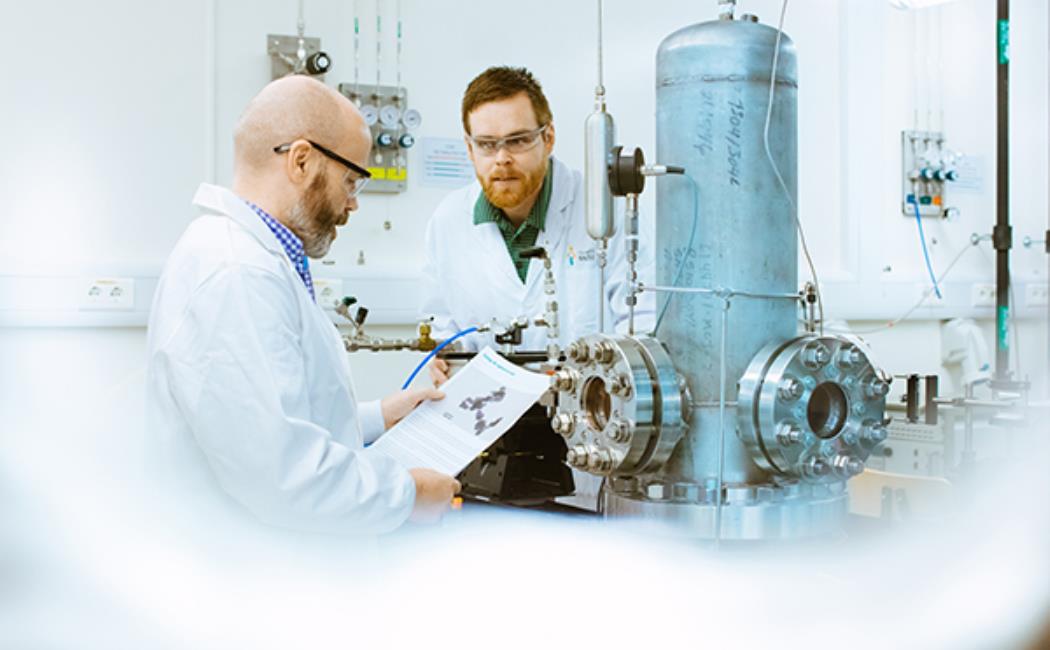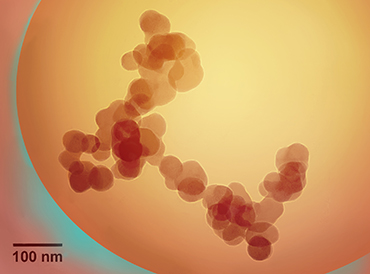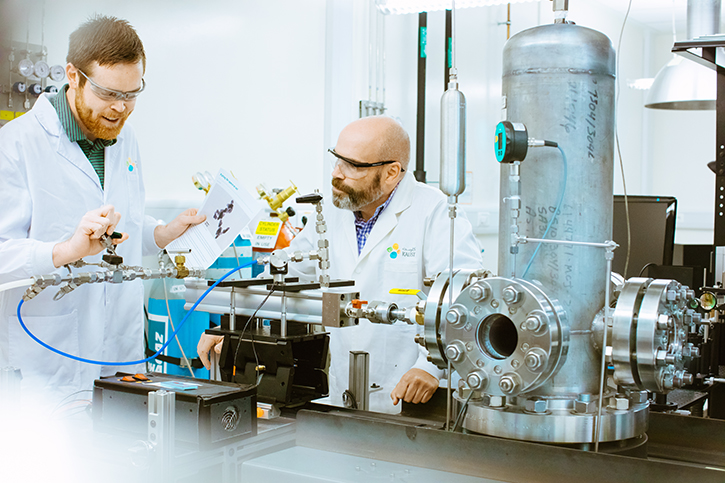


11 November, 2018

Soot particles form complex chain-like structures called fractal aggregates.
Soot is a major global pollutant, harmful to human health and the second biggest contributor to global warming after carbon dioxide. The complex substance comprises individual nanoparticles that are linked together in chain-like structures called fractal aggregates. Because the effect of soot particles on human health is highly dependent on the soot structure, the team were motivated to understand the formation processes. "The formation of the soot is the key to controlling its emissions,” Amin says. But the effect that elevated pressure has on soot production is not well understood. Roberts and his team developed an efficient method for soot sampling that provides new insights into soot formation.
The team developed a way to sample, at pressures up to 10 atmospheres, the soot particles produced in a laminar flame called a counterflow diffusion flame. The counterflow burner produces a horizontal, circular shaped flame that is stable and uniform. “The counterflow flame allows us to control the fluid dynamic of the flame and requires less computational power for modeling,” explains Anthony Bennett, co-author of the paper and current Ph.D. student in Roberts’ team. The researchers collected soot from the flame using a fine carbon-coated copper mesh held by a pneumatically powered robot arm that rapidly shoots out to collect a soot sample with minimal disturbance to the flame.

Bill Roberts (right) and Anthony Bennet with the pressure vessel the group used to perform the experiments.
“This shows the importance of the influence of pressure on soot emissions,” Bennet says.The team analyzed their soot samples using transmission electron microscopy and observed that elevated pressure significantly increased soot particle size. The mean particle diameter of 17.5 nanometers at 3 atmospheres of pressure rose to 47 nanometers at 10 atmospheres.
Now that they have developed an effective high-pressure experimental setup and soot-sampling procedure, the team has many more experiments planned, Amin says. “We would like to extend the investigations to a pressure of 40 atmospheres, which is relevant to the operating pressure of gas turbines,” he says.
The team would also like to investigate how different fuel chemistry and residence times influences soot production at elevated pressure. “Our current experimental facilities provide the control to perform such investigations,” Amin says.
Amin, H. M. F., Bennett, A. & Roberts, W. L. Determining fractal properties of soot aggregates and primary particle size distribution in counterflow flames up to 10 atm. Proceedings of the Combustion Institute advance online publication, 11 September 2018.| article